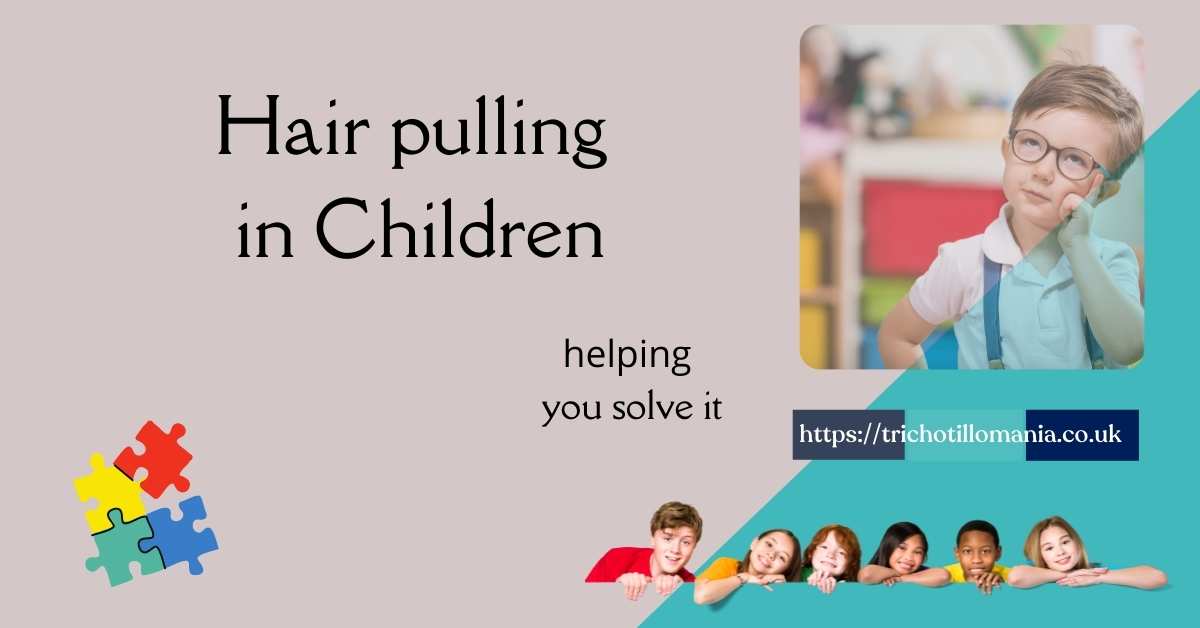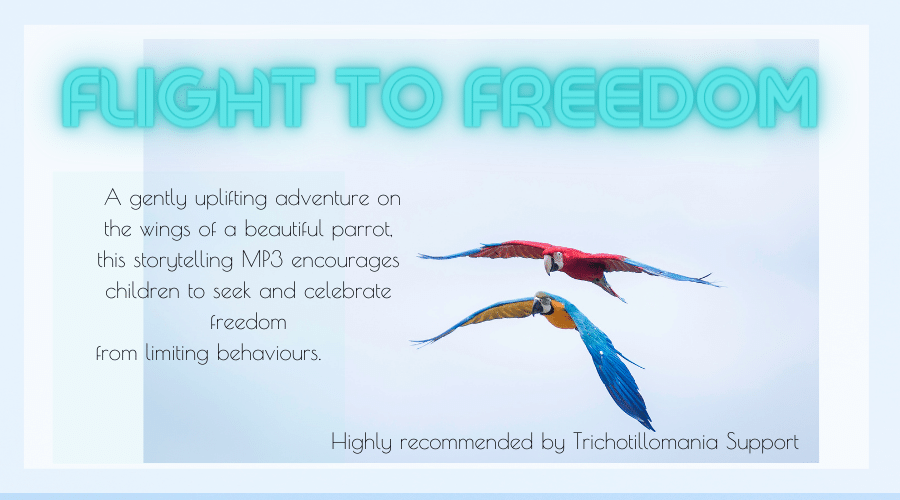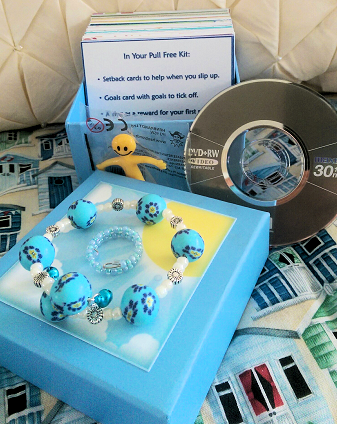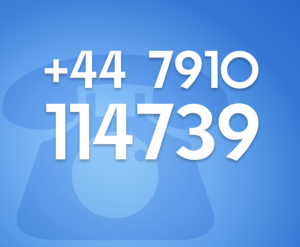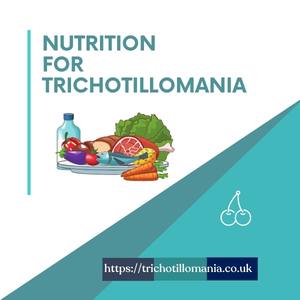Infant Onset Trichotillomania or baby trich (pronounced trick, not tritch): The Nitty Gritty. (We'll keep this bit nice and short, you need Support, not facts).
Infant onset trichotillomania or baby trich manifests in babies pulling their own hair out, beginning prior to the age of two years. Trichotillomania is an impulse control problem sometimes described as an OCD or a Body Focused Repetitive Behaviour, but please don’t worry, there is nothing wrong with your hair pulling baby. He or she is naturally fiddling with something that is constantly within reach, and possibly also exploring it orally. Like any human being, your baby is finding ways to comfort themselves.
Does your baby pull their hair out? Are they obsessed with yours and constantly pulling at it?
Baby hair pulling can be temporary, self-soothing behaviour or the start of a chronic condition. You will need support and understanding and may want to call our UK helpline, 07910 114739.
We’re sorry you are in this position, and are here to help inform and support you.
Settle in, lets talk a while - this is emotional and not your fault
There are limited methods of self-soothing available to babies. Baby Trich (pronounced trick, not tritch) is a self-soothing technique, and while self-soothing is to be encouraged, hair pulling, obviously, is not. You are still getting to know your baby, and how they adapt to the world around them. Observation is key to understanding. Then you can show them how to self-soothe positively.
Does my baby feel discomfort when hair pulling?
Probably not. They may be tired, but they are likely quite comfortable. All humans, adult and babies, go through stages of comfort and discomfort throughout the day. The hair pulling in babies likely occurs when they are comfortable and inactive, such as watching or listening to something.
Your baby hair pulling is not dangerous, neither is it anyone’s fault. You have done nothing wrong, and neither has your baby. There are many similar babyhood behaviours, like licking metal and glass and thumb-sucking, which soothe the child. Most people with trichotillomania find hair pulling relaxing, while people without trichotillomania might find it painful.
Trichotillomania is the compulsive hair pulling condition. Infant onset trichotillomania, often referred to as Baby Trich, begins before the baby is able to effectively use language.
Hair twisting is a fairly common behaviour in babyhood, which can be connected with hand, hair or thumb-sucking. Hair pulling in babyhood is often linked with putting things in the mouth and can be a type of trichotillomania, known as Baby Trich.
Baby Balding
Many, but not all, children with Trichotillomania, pull hair to the degree that they cause noticeable baldness. Remember what is noticeable to you, won’t really be as noticeable to other people. If your baby gets attention for hair pulling, it is likely he or. She will do it more. Ignore at the time it is occurring
What causes my baby to pull hair out?
We prefer not to get lost in looking for reasons, because it can lead to blaming.
In all probability, there is a gene in one or both of their parents’ families, which codes for impaired impulse control or obsessive compulsive behaviour. It is also possible that these conditions can be triggered by infections such as Streptococcal Pharyngitis although a gene may increase susceptibility to this condition.

Babies pick up on their parents’ distress, and it is worth YOU meditating for a few minutes daily for a month, to see how your baby’s hair pulling is affected.
Anything YOU are doing with your hands, your child will want to mimic, so stroke a soft fabric on your face while making pleasant noises, and observe whether your baby wants to take it from you. Make some edible play dough, keep it accessible and play with it yourself.
Good news: studies have shown that the younger the child, the more likely he or she is to grow beyond the pulling behaviour. Hair will certainly regrow and there are many techniques in this article which can help.
Distract. Cultivate interest in shape-sorting, ball rolling or other hands-on, active pursuits.
Spend time outdoors.
Should I take my hair pulling baby to the doctor?
As long as your child hasn’t recently been ill with an infection, we would suggest waiting for a while. If there are noticeable bald spots larger than a golf-ball, then you might want to consider visiting a doctor. However, at this stage there is nothing which can medically be done to assist, and we recommend using coconut oil topically instead.
My baby had an infection and then started hair pulling
Take the baby to the doctor as quick action may prevent repercussions.
My Baby pulls hair and eats it
Take the baby to the doctor if large amounts of hair are ingested and not coming out in the nappies (diapers).
We change the environment, not the child
Changing up layouts of rooms can help, keeping things in motion. Many tricsters don’t like to be still or bored and it helps to reassure them while inactive. If you are a family who watches movies together, make sure to have frequent breaks and prepare fiddle toys in advance.
When the child fidgets, you can tell them they are safe.
We highly recommend that parents appear, at least to the baby, to ignore baby tric.
Add extra protein and zinc to the child’s diet, put plenty of coconut oil on their hair before bed and soothe yourself with baby safe items which you allow your baby to “borrow”. Tire the baby out as much as possible so there is not much time spent tired, which will be the highest risk time. Weighted blankets may help and gentle music or recorded stories should be left playing while the baby sleeps.
Record-Keeping for Hair Pulling
Parents: Identify and, if possible, record the baby’s hairpulling. View the baby monitor on fast forward to see when the pulling occurs (times of day), etc. Is there a ritual associated with the pulling?
- DON’T RECORD WHEN THE CHILD PULLS, FOCUS ON WHEN THEY DON’T PULL & WORK ON HOW TO INCREASE THOSE TIMES.
- Similarly, don’t tell the child not to touch their hair. Give them something else to hold, or place them temporarily in a situation where they can’t pull, with something such as a thumbsie.
BABYHOOD is a normal time for putting things in the mouth and stroking soft things. However, it is likely that you hair pulling child will always be sensitive to textures. This is a GOOD thing – if you know that your child can be comforted with really soft toys and blankets, you can keep one or two softer toys aside for use when tired or unwell.
Play music while very gently brushing your baby’s hair at night and then add a little coconut oil by gently stroking it through. In very rare situations, the baby might like the taste of the coconut oil and eat more hair. This is very unlikely, but if it does occur, swap the coconut oil for Vaseline. The idea is to change the texture of the baby’s hair at night, so she doesn’t want to pull it. Observe the baby monitor to see if it makes a difference.
Revise strategies for stopping your child hair pulling when they can use language well enough to ask for what they want in sentences. NEVER make it a battle, as if you do, your child’s hair pulling will win.
Treatment of babyhood hair pulling is tricky (sorry!) but entirely possible. You can make an appointment to discuss it with us. We would be happy to help both you and your baby. We are interested in what happened to YOU. More research is needed to investigate genetic causes of hair pulling in babies, as well as to consider the connection between trauma in parents and grandparents, and babyhood hair pulling.
created 8th February 2022, review 8th February 2023

